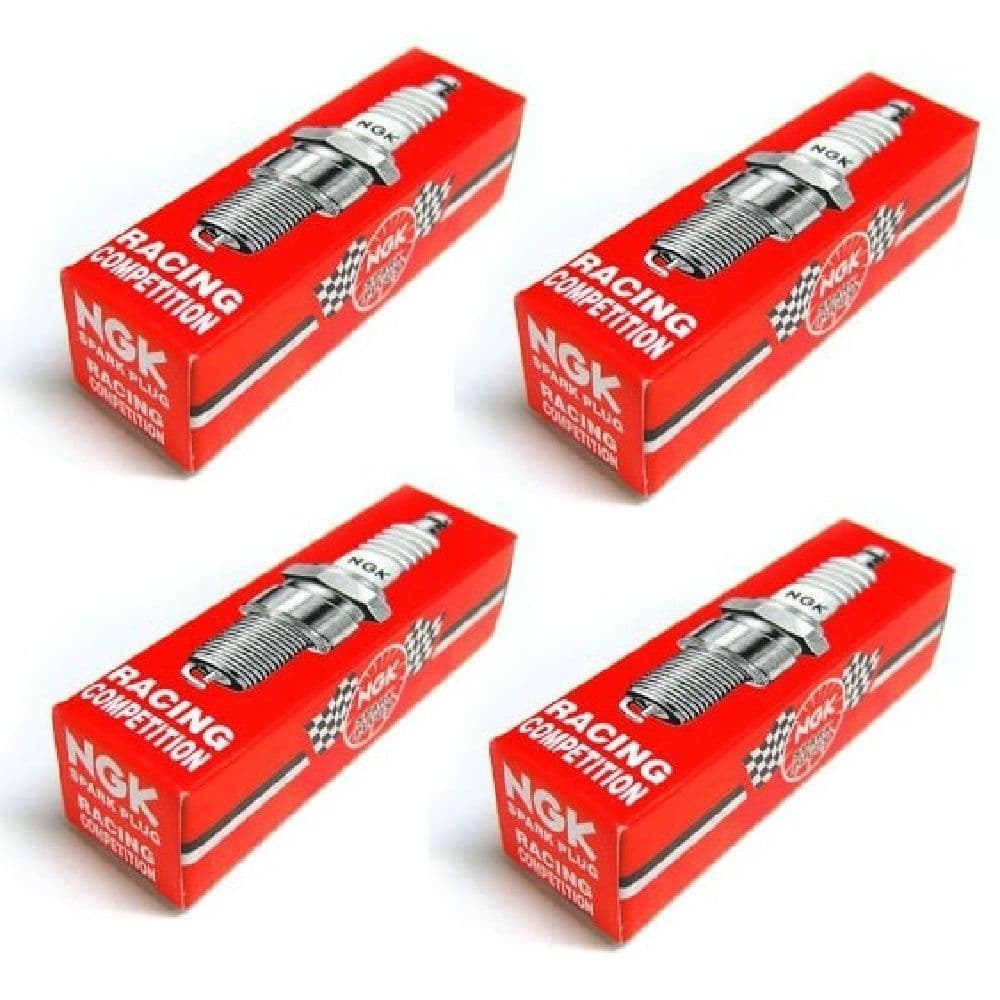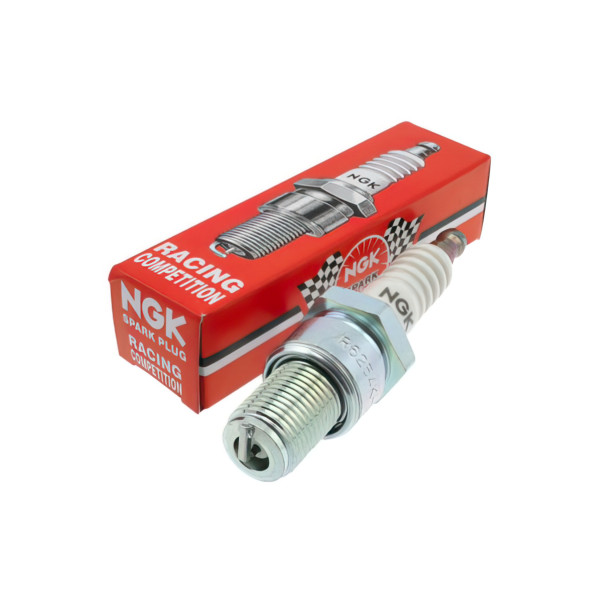NGK Racing Spark Plugs Heat Range Chart helps select the right spark plug based on engine performance. It ensures optimal efficiency by matching the heat range to your engine’s needs, preventing fouling and pre-ignition.
When it comes to performance and engine longevity, one of the most overlooked but important components is the spark plug. knowledge about the heat range of NGK Racing Spark Plugs can drastically improve your engine’s performance. This article will guide you through the NGK Racing Spark Plugs Heat Range Chart, explaining why selecting the right heat range is essential for the engine’s health and efficiency.
In this article we’ll explain the significance of heat range, how to choose the right spark plug for your engine, and much more. Let’s dive deep into this essential topic!

Contents
What is Spark Plug Heat Range?
The heat range of a spark plug refers to its ability to dissipate heat from the combustion chamber. If a spark plug doesn’t dissipate heat efficiently, it can lead to engine misfires, pre-ignition, and fouling, which can seriously damage your engine. A spark plug that retains heat is known as “hot,” whereas one that disperses heat rapidly is considered “cold.”
In general, the heat range is an essential factor when selecting the right spark plug for your engine. NGK, a leading brand in the spark plug industry, offers a comprehensive heat range chart that can help you pick the perfect spark plug for your car, motorcycle, or racing engine.
NGK Spark Plug Heat Range System
NGK uses a numeric scale to represent the heat range of its spark plugs. The scale helps users identify whether a spark plug is hot or cold.
- Lower Number = Hotter Plug: Spark plugs with a lower number (e.g., 5, 6) are hotter plugs and are designed for vehicles that operate under normal conditions and temperatures.
- Higher Number = Colder Plug: Spark plugs with higher numbers (e.g., 8, 9) are colder plugs, suitable for high-performance engines that experience higher operating temperatures.
It’s important to select a spark plug that aligns with your engine’s requirements. For instance, racing engines, which run at higher temperatures, require colder plugs. In contrast, everyday vehicles typically require hotter plugs.
NGK Racing Spark Plugs Heat Range Chart: Detailed Breakdown
Let’s take a closer look at NGK’s racing spark plugs heat range chart and what each level means for your engine’s performance:
| Heat Range | Application | Example Spark Plug |
|---|---|---|
| 2-4 | Standard, everyday vehicles, small engines | NGK BPR4ES |
| 5-7 | Standard passenger vehicles, mild performance tuning | NGK BKR6E |
| 8-9 | Performance and modified engines, racing vehicles | NGK BKR8E |
| 10+ | High-performance engines, extreme racing applications | NGK BKR10E |
- Heat Range 2-4: These are designed for smaller engines or standard vehicles. They retain more heat, ensuring that the plug doesn’t foul under low-load conditions.
- Heat Range 5-7: Ideal for everyday cars, this range ensures the spark plug operates efficiently for normal driving conditions.
- Heat Range 8-9: Suited for modified performance engines that produce higher temperatures. These spark plugs dissipate heat quickly to prevent damage and maintain high engine performance.
- Heat Range 10+: Used for high-performance, racing engines that operate under extreme conditions. These plugs are designed for engines running at very high temperatures.
How to Choose the Right NGK Racing Spark Plug
Selecting the right spark plug from NGK’s heat range chart involves considering various factors. Here’s how you can make the right decision:
1. Know the Engine’s Requirements
- Stock Engines: For standard, non-modified engines, a mid-range spark plug like the NGK BKR6E (Heat Range 6) will provide the best balance of heat retention and heat dissipation.
- Modified Engines: If your vehicle is modified for higher performance or racing, you might need a colder spark plug, such as the NGK BKR8E (Heat Range 8), to prevent pre-ignition and allow the engine to run cooler.
2. Consider Driving Conditions
- Daily Driving: If you use your car for regular commuting or casual driving, a hotter spark plug (e.g., NGK BKR6E) is ideal as it prevents fouling by operating at slightly higher temperatures.
- Performance Driving: For track days, street racing, or heavy-duty driving (such as towing), opt for a colder spark plug to handle the high temperatures generated by these activities.
3. Fuel Type
- High-Octane Fuel: If you use high-octane fuel, your engine is less prone to knocking and can benefit from colder spark plugs.
- Low-Octane Fuel: If your engine uses lower-octane fuel, it may run hotter, which necessitates hotter spark plugs to prevent damage from pre-ignition.
4. Climate and Weatgaher Conditions
- Hot Climates: If you live in a hot region, the engine is likely to run hotter. A colder spark plug may be necessary to prevent engine knock.
- Cold Climates: Colder spark plugs are generally better in areas with cold temperatures to help the engine reach optimal operating temperature quickly.
Frequently Asked Questions
Here are some FAQs about NGK racing spark plugs heat range –
1. What Happens If I Choose the Wrong Heat Range Spark Plug?
If you use the wrong heat range, you may encounter engine misfires, excessive carbon buildup, or even pre-ignition, which can cause significant engine damage over time. It’s essential to select a plug that matches your engine’s operating conditions.
2. Can Spark Plugs Be Too Cold or Too Hot?
Yes. If the spark plug is too cold, it may foul quickly due to carbon buildup. On the other hand, if it is too hot, it can cause pre-ignition, which can result in engine knock and decreased performance.
3. How Do I Know If My Spark Plug is Too Hot or Too Cold?
You can tell by inspecting the spark plug after use. A too-hot spark plug will have signs of discoloration or even burn marks, while a too-cold plug will show signs of carbon buildup and wetness.
4. How Often Should I Replace My Spark Plugs?
Typically, spark plugs need replacement every 30,000 to 100,000 miles, depending on the vehicle and the type of spark plug. High-performance engines or extreme driving conditions may require more frequent replacements.
5. Can I Mix Different Heat Ranges in My Engine?
No, mixing different heat ranges is not recommended as it can cause inconsistent performance, misfires, or even engine damage. Always use the same heat range across all spark plugs in the engine.
Conclusion
Choosing the correct spark plug for the engine, particularly the right heat range, is a important decision that impacts your vehicle’s overall performance and longevity. The NGK Racing Spark Plugs Heat Range Chart offers valuable guidance in selecting the perfect spark plug for the engine. Whether you are driving a stock vehicle, a modified race car, or anything in between, knowing spark plug heat range ensures optimal engine performance, efficiency, and reliability.
Make sure to use the NGK heat range chart as a reference to match your engine’s requirements and avoid common performance issues such as misfires, fouling, or pre-ignition.
